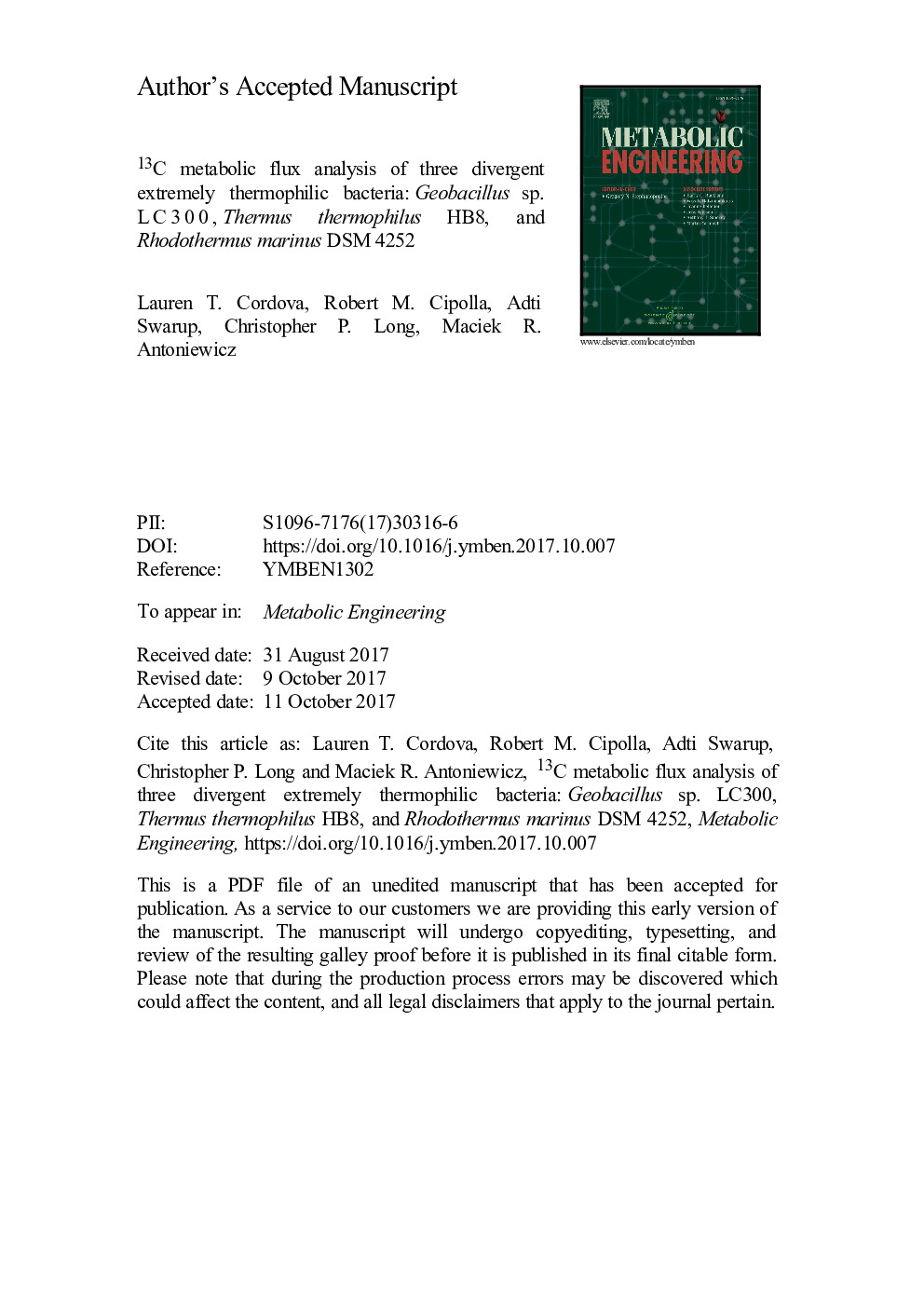| کد مقاله | کد نشریه | سال انتشار | مقاله انگلیسی | نسخه تمام متن |
|---|---|---|---|---|
| 6494148 | 1418335 | 2017 | 35 صفحه PDF | دانلود رایگان |
عنوان انگلیسی مقاله ISI
13C metabolic flux analysis of three divergent extremely thermophilic bacteria: Geobacillus sp. LC300, Thermus thermophilus HB8, and Rhodothermus marinus DSM 4252
دانلود مقاله + سفارش ترجمه
دانلود مقاله ISI انگلیسی
رایگان برای ایرانیان
موضوعات مرتبط
مهندسی و علوم پایه
مهندسی شیمی
بیو مهندسی (مهندسی زیستی)
پیش نمایش صفحه اول مقاله

چکیده انگلیسی
Thermophilic organisms are being increasingly investigated and applied in metabolic engineering and biotechnology. The distinct metabolic and physiological characteristics of thermophiles, including broad substrate range and high uptake rates, coupled with recent advances in genetic tool development, present unique opportunities for strain engineering. However, poor understanding of the cellular physiology and metabolism of thermophiles has limited the application of systems biology and metabolic engineering tools to these organisms. To address this concern, we applied high resolution 13C metabolic flux analysis to quantify fluxes for three divergent extremely thermophilic bacteria from separate phyla: Geobacillus sp. LC300, Thermus thermophilus HB8, and Rhodothermus marinus DSM 4252. We performed 18 parallel labeling experiments, using all singly labeled glucose tracers for each strain, reconstructed and validated metabolic network models, measured biomass composition, and quantified precise metabolic fluxes for each organism. In the process, we resolved many uncertainties regarding gaps in pathway reconstructions and elucidated how these organisms maintain redox balance and generate energy. Overall, we found that the metabolisms of the three thermophiles were highly distinct, suggesting that adaptation to growth at high temperatures did not favor any particular set of metabolic pathways. All three strains relied heavily on glycolysis and TCA cycle to generate key cellular precursors and cofactors. None of the investigated organisms utilized the Entner-Doudoroff pathway and only one strain had an active oxidative pentose phosphate pathway. Taken together, the results from this study provide a solid foundation for future model building and engineering efforts with these and related thermophiles.
ناشر
Database: Elsevier - ScienceDirect (ساینس دایرکت)
Journal: Metabolic Engineering - Volume 44, November 2017, Pages 182-190
Journal: Metabolic Engineering - Volume 44, November 2017, Pages 182-190
نویسندگان
Lauren T. Cordova, Robert M. Cipolla, Adti Swarup, Christopher P. Long, Maciek R. Antoniewicz,